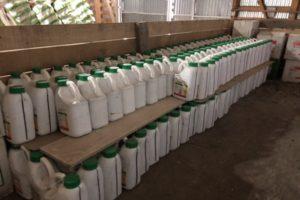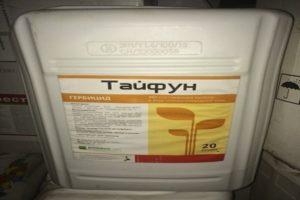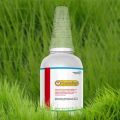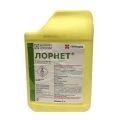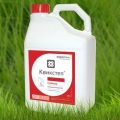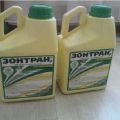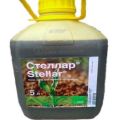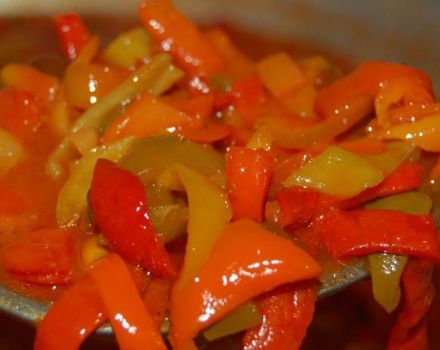Instructions for the use of herbicide Ballerina and consumption rates
Weed control is considered important in the agricultural technology of vegetables and grain crops. In vegetable gardens, weeding is done manually. But with large areas, you have to deal with weeds with the help of chemicals. With the herbicide "Ballerina" it will be much easier to cultivate crops.
Content
- 1 The composition and form of release of the herbicide
- 2 Pros and cons of the remedy
- 3 Product variety and spectrum of action
- 4 Solution preparation
- 5 Consumption rate
- 6 Instructions for use
- 7 Waiting time and efficiency
- 8 Is it compatible with other herbicides
- 9 Precautions for use
- 10 Actions in case of poisoning
- 11 Transport and storage duration
- 12 Analogs
The composition and form of release of the herbicide
On corn and grain fields to eliminate annual weeds of the dicotyledonous type and perennial weeds propagating by root suckers, the herbicide "Ballerina" is used.
It contains salts and esters of 2,4 dichlorophenoxyacetic acid, or 2,4 D. The substance belongs to herbicides, acting selectively on weeds, without damaging crops. This group of substances is hormonal. The activity of preparations with 2.4 D is great in relation not only to annual dicotyledonous plants, but also to perennial grasses. The drug does not penetrate into grain crops, as their cuticles are thicker than that of weeds. Cereals at the tillering stage are especially resistant to herbicides. The amount of 2-hexylethyl ether in the pesticide is 410 grams per liter.
Another agrochemical component is triazole pyrimidines. Acting as a key enzyme in the synthesis of amino acids, they cause the death of weeds. Florasulama is contained in a liter of the drug in the amount of 7.4 grams.
The herbicide "Ballerina" is produced in the form of a suspension emulsion in packages of 5 and 1 liter.

Pros and cons of the remedy
The advantage of using a herbicide is that the drug:
- effective against common weeds such as bedstraw, chamomile, thistle, euphorbia, dandelion, blue cornflower and others, about 150 dicotyledonous species;
- quickly acts and destroys weeds;
- can be used after 3-5 leaves appear on maize, second internode on grain plants;
- used in all types of crop rotation.
The preparation protects the fields sown with crops until the next wave of weeds appears.

The disadvantage, in addition to the high price, of the drug is increased toxicity. It is necessary to choose the right time for using the emulsion in order to achieve a positive result.... The herbicide will not work if the weeds have entered the flowering stage. It is worth noting the high degree of toxicity of the product for humans, and less for bees.
Product variety and spectrum of action
There are 3 varieties of the drug "Ballerina":
- The "Ballerina" product contains a larger volume of the 2.4 D component than the triazolpyrimidine group.Substances block growth points of weeds, prevent them from multiplying.
- A number of biologically neutral additives and chemicals have been introduced into the Ballerina Super product, which increase the effectiveness of the drug against certain weeds.
- "Ballerina Mix" is stronger and quickly destroys dicotyledonous annuals and perennials that interfere with the growth of corn, oats and rice. The action of the drug is based on the use of a binary formula in the production of the herbicide. It is necessary to use the herbicide together with the "Mortyra" preparation. This complicates the process of preparing the working solution.
All slurries are designed for use in weed control in agricultural fields.
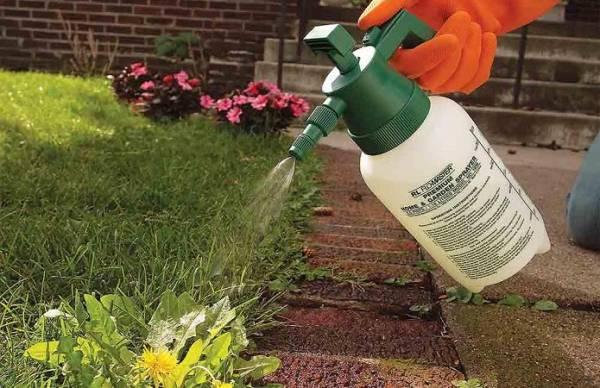
Solution preparation
The working fluid is prepared immediately before the field is processed. Half the water is poured into the spray tank.
To prepare a 15% stock solution, 7.5 liters of water must be mixed separately with 1.5 emulsions. Then, stirring occasionally, add to 10 liters. After stirring for 5 minutes, pour into a tank half filled with water. Stir already in the sprayer until a homogeneous emulsion is obtained.
The container in which the herbicide was mixed is thoroughly rinsed, pouring the remaining water into the sprayer tank.
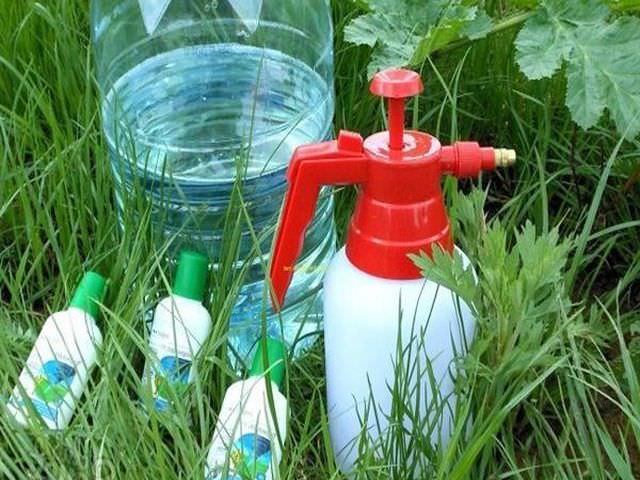
It is necessary to prepare the solution on separate sites, which can then be disinfected.
Consumption rate
The usual rate of consumption of an agrochemical per hectare is 200-300 liters of working fluid. It is not recommended to increase the dose much if the field is completely overgrown with weeds. It is necessary to carry out processing on time, at such stages of development of cultivated plants, so as not to harm the crop:
- For spring plants, barley and wheat, the period of tillering or emergence into tubes at the phase of the second internode is chosen. Winter crops are sprayed with 0.5 liters of the drug per hectare in spring.
- To clear the corn field of weeds, use the "Ballerina" product when the cultivated plants produced 3-5 leaves.
- It is possible to destroy weeds in fields with sorghum and millet in the early stages of weed development.

If the weeds have begun to bloom, it will be more difficult to get rid of them. The poisonous chemical penetrates into the herbs through the leaves.
Instructions for use
Before using a toxic emulsion, you need to read the instructions. Herbicide "Ballerina Mix" is used when the fields are heavily weed, especially with perennial root-saplings.
If the bedstraw, chamomile and other weeds have reached a growth of 15-20 centimeters, then you will have to spray with a stronger type of herbicide.
Herbs grow actively at an air temperature of 8 to 25 degrees Celsius. Therefore, in such weather, the effectiveness of the toxic solution increases. Frost can lead to the decomposition of the solution and to the lack of results of its application.

Crops are sprayed in the morning or in the evening in clear weather, which should stand for several more days.
Waiting time and efficiency
The systemic herbicide penetrates into the plants 1 hour after treatment. The substances block the growth of plant cells in young weed tissues. After 3-4 days, there are signs of drug action. Leaves curl in weeds, green parts become discolored, internodes are reduced.
Weeds finally die after 3-4 weeks. The period of complete destruction depends on weather conditions and debris in the field.
The cultivated field will be protected from weeds until the next wave of their growth.

Is it compatible with other herbicides
Herbicide "Ballerina" is used in tank mixtures with other preparations. The remedy works best of all together with "Mortyra", "Magnum" and other herbicides based on sulfonylurea. The drug is combined well with fungicidal and insecticidal agents. For cereals, a mixture of herbicide with graminicides is used.Per hectare, they take 0.3-0.6 liters of "Ballerina" and the preparation "Eraser" in the amount of 0.9 liters.
Precautions for use
The toxicity of the drug in relation to humans - 2nd class, to bees - 3rd. After processing, people cannot appear in the fields without a mask and special clothing.
The safety measures when working with the drug include the fact that it is prohibited to process near:
- apiary;
- water protection zone;
- recreation areas, sanatoriums, children's camps;
- animal nurseries, pastures;
- private gardens.
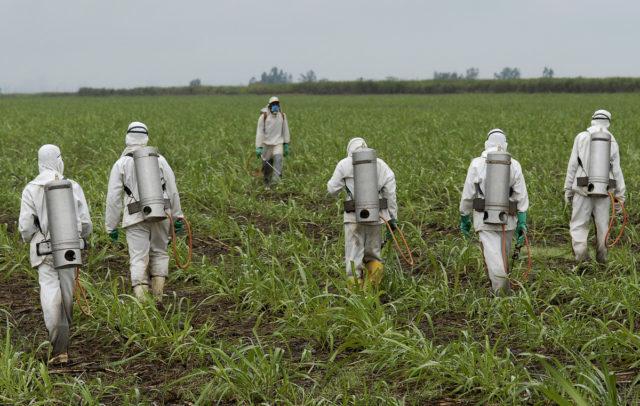
The place of exposure to the agrochemical should be located at a distance of 500 meters from housing, food storage facilities. Applying a full set of herbicides, one must think about their high activity in relation to humans.
Actions in case of poisoning
A person who does not follow the rules for working with herbicides of the 2nd toxicity class can be poisoned. In contact with the skin and mucous membranes, the toxic substance quickly penetrates the body, causing:
- breaking headache;
- shallow breathing;
- weakness, nausea, vomiting;
- lacrimation, increased salivation;
- violation of coordination of movements.
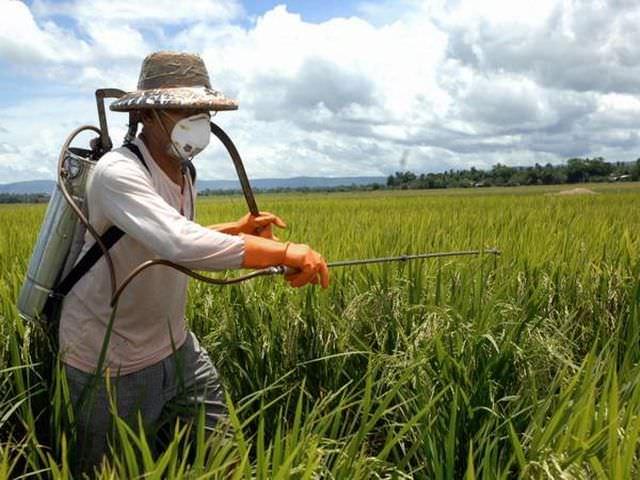
If drops of solution get on the skin, blot the damaged area with a cotton swab dipped in a baking soda solution. After processing, the clothes are given for decontamination. Regular washing with soap is indispensable. Be sure to take a shower, rinsing thoroughly all parts of the body.
The appearance of the first signs of poisoning is a signal to call a toxicologist.
Transport and storage duration
Transportation and storage of the Ballerina herbicide is carried out in tightly closed containers. A room with pesticides should be 150 meters away from residential buildings.
And the preparation of the working fluid takes place on a site located no closer than half a kilometer.
The emulsion is stored for 3 years from the date of manufacture. At low temperatures, the herbicide decomposes and loses its effectiveness
Analogs
The herbicides "Asterix", "Primadonna", "Primavera", "Florax" have a similar composition and effect. All products are effective against a wide range of dicotyledonous weeds.
